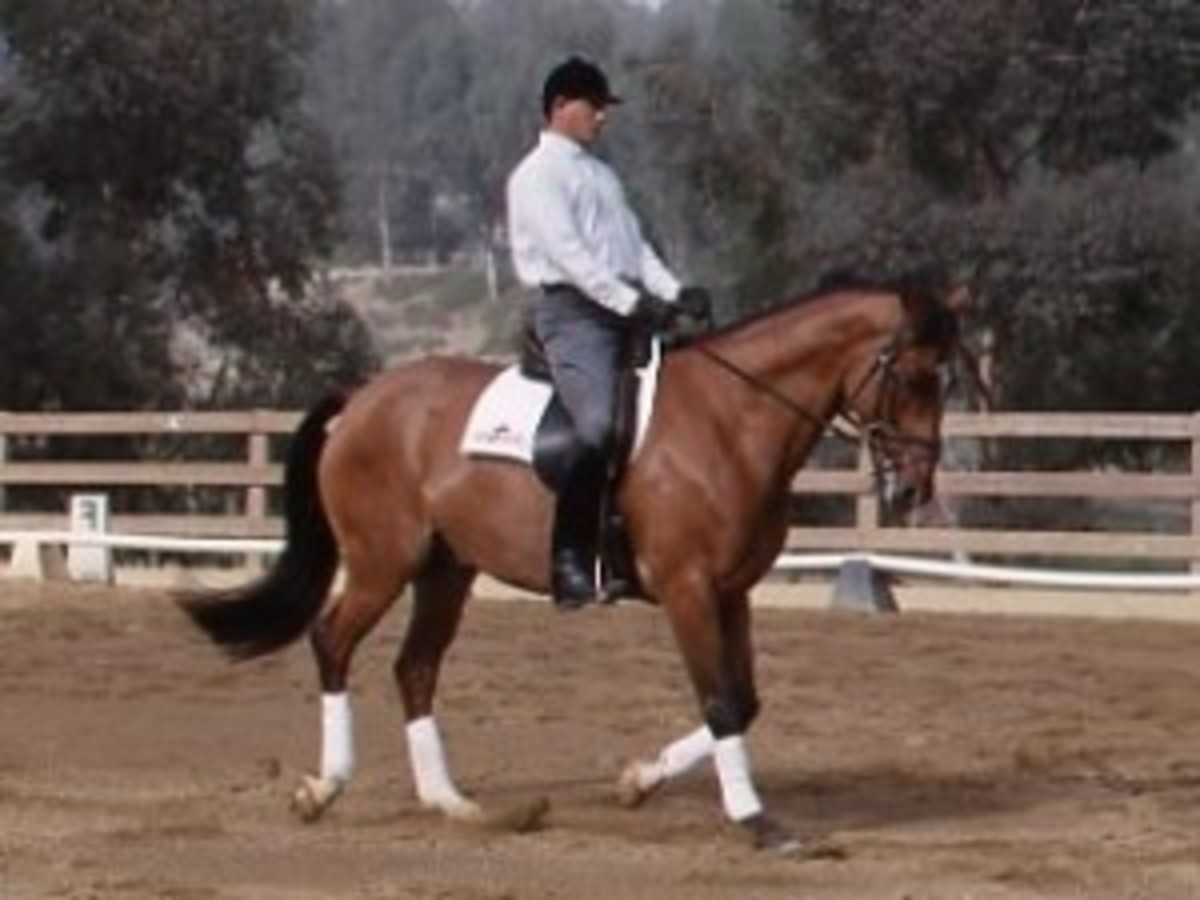In the October 2008 issue of Dressage Today, top European trainer Henk van Bergen shows you how half halts, transitions and various movements balance the dressage horse. In the video clip below, Jennifer Baumert shows how half halts and transitions improve her 6-year-old Hanoverian gelding Dewert’s balance so he begins to carry more of his weight on his hindquarters and less on his front end.

Most horses start out in a balance that is “on the forehand.” That is, they carry more weight on the front legs than on the hind legs. Half halts and transitions help him to move toward a 50-50 balance in which half of his weight is on the front end and half is on the hind end. In a 50-50 balance, the horse’s neck is free and can be relaxed because he doesn’t need it to keep his balance. From this balance, you can train your horse.
[flowplayer splash=”/wp-content/uploads/2008/07/video_create_better_balance_dressage_horse_350.JPG” src=”/wp-content/uploads/2008/07/Create_Better_Balance_in_a_Dressage_Horse.flv” width=”350″ height=”287″]
Video by Ashley Perkins
[/flowplayer]
As you watch this video, observe the following:
- DeWert’s downward transitions help to engage him, that is, he puts his hind foot in a place where he can carry a little more weight.
- From this engagement, he is in a better position to thrust in an upward transition that brings him to a 50-50 balance and then to an uphill balance.
- The ideal medium trot retains the carrying quality of collection, and then the collection retains the powerful quality of the medium.
Your horse will give you feedback when the balance is good.
- You will feel that your horse’s neck is relaxed. As a result of his improvement in the balance, you’ll have a nice feel in the hand. Henk often reminds his riders to ride in such a way that the feel in the hand is nice.
- He will also be comfortable to sit because his entire back will be relaxed–not just his neck.
- When the balance improves, you will also notice that the rhythm gets more defined and reliable.
You can see that some half halts and transitions are not totally successful. When you work on this at home, be patient knowing that you can’t be successful all the time, but you will see improvement if your horse starts to use his hind legs in a more carrying way.
Henk van Bergen trained riders for the Olympic Games in 1972, 1984, 1988 (for the Japanese team) and 1992, where his Dutch team won the silver medal. He has trained the Juniors and Young Riders of Great Britain for eight years and continues to coach many top senior riders. He will be the featured presenter at the 2009 Succeed/USDF FEI-Level Trainers’ Conference, January 18-19, 2009, in Loxahatchee, Fla. Based in Nijmegen, the Netherlands, he and his wife, Wilma, own Dressuurstal Brakkenstein, a training facility where many Dutch national championships have been held.
For Henk van Bergen’s article on bringing the dressage horse to an uphill balance, see the October 2008 issue of Dressage Today. To order back issues, call 301-977-3900.











